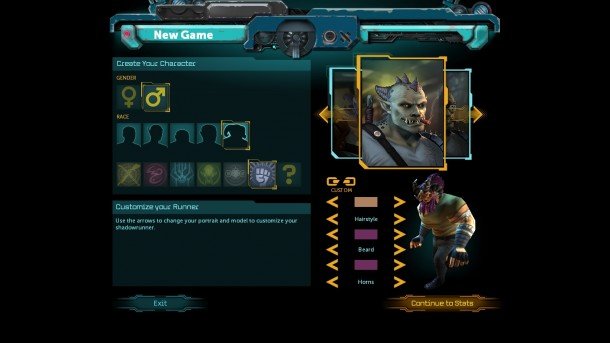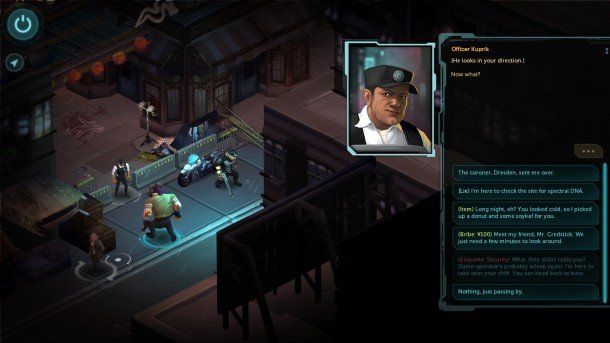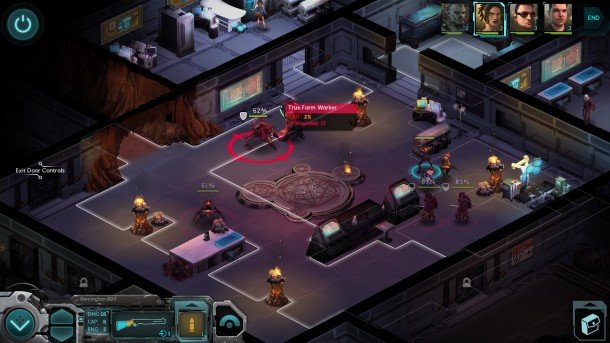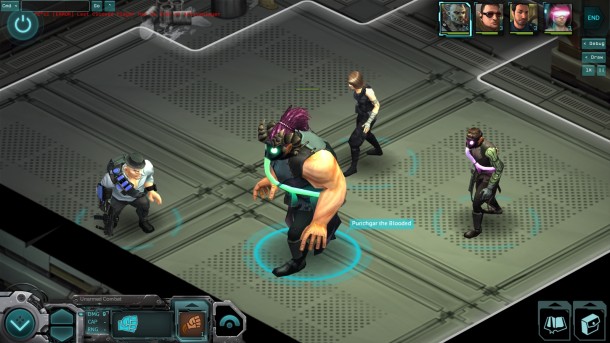Our Verdict
An enjoyable, if simplistic, tactical RPG with just enough intrigue to keep you invested.
PC Gamer's got your back
The world of Shadowrun is one where freelance trolls with dreadlocks punch transdimensional giant insects to death with their bare hands. You can't really dress it up as anything other than what it is, and the same goes for Harebrained Schemes' Kickstarted RPG, Shadowrun Returns . It's an affectionate adaptation of the tabletop game built on a low-tech engine with a surprisingly interesting story... and not much else.
Returns is set in an alternate future in which magic returned to the world in 2012, bringing elves, witches, and dragons along with it. Shadowrunners are the smugglers, mercenaries, freelance ghost busters, and master hackers for hire that make their way in between the cracks of the magitech-meets-futuretech dystopia. The player takes on the role of one such 'runner, on the trail of an old friend's killer while putting together a diverse team of up to four to pay the bills. This takes place across a top-down, isometric world supported by turn-based combat and text-based dialog trees.

You'll have your pick between the standard fantasy races (who are actually mutated humans in the Shadowrun universe) like elves, dwarves, and orcs, each with different strengths and limitations. Class options range from support casters to spirit summoners to the self-explanatory Street Samurai. The possibilities are bountiful. I picked a troll with dreads who punches things in the head.
Thrust into the world with only a thirst for violence and an '80s action hero disdain for authority, my character, Punchgar the Blooded, found himself wrapped up in a mystery wrapped up in a conspiracy wrapped in a bigger conspiracy. While the first two acts kept my attention with their sense of paranoia and slow trickle of clues, the third overstayed its welcome a bit. I felt like Jack Bauer in the latter half of any season of 24, asking, "Okay, who's the real main bad guy? And do I get to punch them in the face yet?"

The narrative is aggressively linear for an RPG, shepherding you from one map to the next without any real opportunity to explore or forge your own path. Situations in which a character's skills come into play out of combat—such as having enough charisma points to talk past a guard—are largely pointless, as they seem to only save you time in the dialogue tree at best. I never even ran into a situation in which my lack of conversational skills (Punchgar isn't what you'd call a "people troll") made me have to fight anything. Asking "pretty please" a few more times almost always gets the same results, making points in those non-combat skills feel wasted.
While the storytelling has its ups and downs, combat is definitely a strength for Shadowrun Returns. With a diverse crew, any given round of combat could see you summoning a spirit, throwing a concussion grenade to force your enemies to skip a turn, and unloading with machine gun fire. All this while your Decker (read: super hacker) is in cyberspace, represented by a completely different map, trying to complete a combat mini-game to cut off the enemy reinforcements. Early on, most fights will feel like pushovers (and too far between), but some of the later encounters can be on par with XCOM: Enemy Unknown's Classic Mode. Even with the best party and the best gear, a couple of small mistakes could kill you.

While the bundled campaign offers a decent amount of content for a $20 game, Shadowrun Returns also comes with a flexible editor that will feel intuitive to anyone with at least a basic understanding of scripting and triggers. The editor, in fact, is a fair bit more powerful than the campaign would suggest, offering functionality you wouldn't even know existed from having played through. If you're all right setting your campaign in Shadowrun's futuristic Seattle, you'll have access to all of the assets used to make the game. Otherwise, you can import your own or even edit existing ones without an external program.
Shadowrun Returns' bang-to-buck ratio is largely going to depend on the quality of content that springs up from the devs and the community after release, but as it stands today, it's a mostly average RPG running in a visually underwhelming engine. Between the varied, challenging combat encounters and the somewhat above par (if barely interactive) plot, it's worth the 20ish hours it will take to complete. Like the life of a Shadowrunner, it drags in places and shines in others.
An enjoyable, if simplistic, tactical RPG with just enough intrigue to keep you invested.
Len Hafer is a freelancer and lifelong PC gamer with a specialty in strategy, RPGs, horror, and survival games. A chance encounter with Warcraft 2: Tides of Darkness changed her life forever. Today, her favorites include the grand strategy games from Paradox Interactive like Crusader Kings and Europa Universalis, and thought-provoking, story-rich RPGs like Persona 5 and Disco Elysium. She also loves history, hiking in the mountains of Colorado, and heavy metal music.


